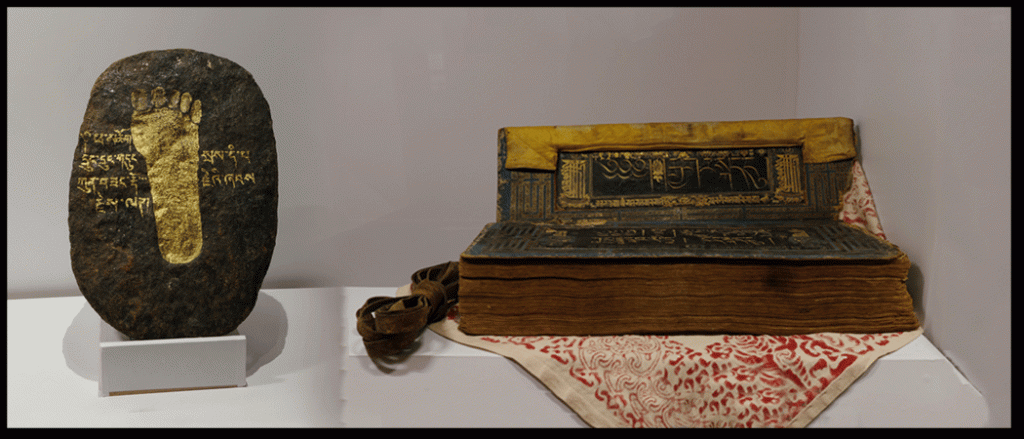
Inside the museum entrance on the fourth floor is a small collection of prehistoric items ranging from adzes to earthenware pots collected from different parts of the country. The items represent an important source of information demonstrating the existence of people in Bhutan since the Stone Age.
Also on display in the fourth floor are religious items from the time when Buddhism was introduced into Bhutan in the 8th century such as ritual daggers, swords and other sacred items.
Juthruel Zhithro Kilkhor
This particular three-dimensional mandala built in the National Museum is known as the Juthruel Zhithro Kilkhor (miraculous manifestations of peaceful and wrathful deities) and is based on the Guhegarbha tantric text. It is one of the most popular mandalas in the Old School or Nyingma tradition, consisting of hundreds of deities residing inside the mandala. The principal deity couple is the yab-yum (father-mother) of Buddha Samanta Bhadra and Badri, which symbolize the union of wisdom and method of the mind nature. This Buddha yab-yum is surrounded by forty-two peaceful deities and fifty-eight wrathful deities. These deities are assembled inside the mandala along with the dharma protecting deities.
